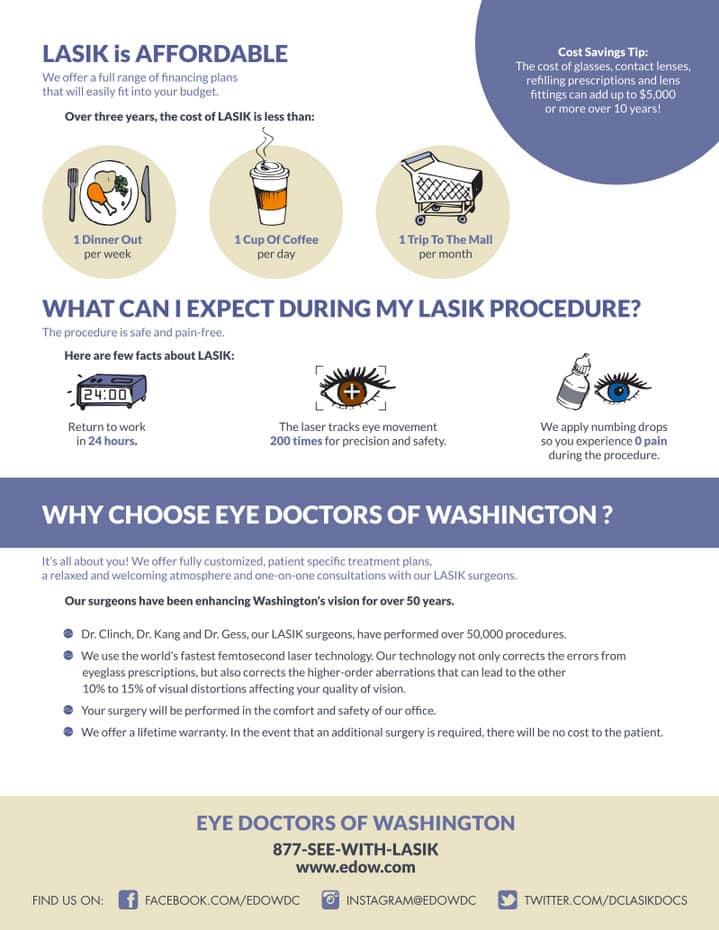Vision Correction Through Lens Substitute: A New Age In Sight

Web Content Author-Schroeder Storm
Imagine a future where you no longer have to count on glasses or get in touch with lenses to see clearly. A future where vision improvement is as straightforward as a fast, painless treatment.
Well, that future is closer than you could think. Introducing refractive lens exchange, an advanced technique to fixing your vision that could alter the means you see the world.
However just what is refractive lens exchange, and why is it thought about the future of vision correction? In this discussion, we will explore the benefits, the treatment, and the possible dangers of refractive lens exchange, giving you a glimpse into what lies in advance for those looking for clearer vision.
The Advantages of Refractive Lens Exchange
Refractive Lens Exchange provides various benefits for individuals seeking vision correction. By changing Recommended Online site with a fabricated intraocular lens, this treatment can fix a vast array of vision problems. One of the major benefits of refractive lens exchange is the enhancement in visual acuity. Whether you're myopic, farsighted, or have astigmatism, this treatment can considerably improve your ability to see clearly without counting on glasses or get in touch with lenses.
Additionally, refractive lens exchange can likewise protect against the progression of certain eye problems, such as cataracts. This implies that not just will you achieve better vision, yet you'll additionally have a reduced danger of establishing cataracts in the future.
With refractive lens exchange, you can appreciate improved vision and a better of life.
The Procedure for Refractive Lens Exchange
When undergoing refractive lens exchange, the cosmetic surgeon will certainly start by making a tiny cut in your cornea. This permits them to access the lens of your eye and remove it.
Below are five crucial steps involved in the procedure:
- The specialist will thoroughly separate the lens utilizing ultrasound waves or lasers.
- After removing the lens, they'll insert a new synthetic lens, called an intraocular lens (IOL), right into your eye.
- The IOL is developed to fix your specific vision problems, such as nearsightedness, farsightedness, or astigmatism.
- Once the brand-new lens is in area, the specialist will close the incision with tiny stitches or self-sealing techniques.
- The entire procedure typically takes less than half an hour and is typically carried out on an outpatient basis.
Complying with these actions, refractive lens exchange can provide you with enhanced vision and decrease your dependence on glasses or contact lenses.
Possible Risks of Refractive Lens Exchange
Prior to undertaking refractive lens exchange, it is very important to comprehend the possible risks connected with the treatment. While refractive lens exchange is usually taken into consideration secure, like any kind of procedure, there are dangers involved.
One possible danger is infection, which can take place if microorganisms goes into the eye during or after the surgical procedure. Another danger is the development of raised intraocular pressure, which can result in glaucoma. Furthermore, there's a small chance of experiencing corneal edema, which is the swelling of the cornea.
Various other potential risks consist of retinal detachment, macular edema, and loss of vision. https://www.healio.com/news/ophthalmology/20210810/patient-selection-pearls-when-prk-may-be-a-better-option-than-lasik-in-some-patients to talk about these risks with your specialist and consider them versus the prospective advantages prior to deciding.
Verdict
So there you have it, people! Refractive lens exchange is absolutely the future of vision adjustment. With its various benefits and developments in innovation, this treatment offers a life-changing remedy for those fighting with their vision.
Yet remember, every climbed has its thorns. While refractive lens exchange may bring clearness, it is very important to be familiar with the potential risks involved. So, before taking the leap, consider the pros and cons, and speak with your eye doctor.
Besides, far better risk-free than sorry!

